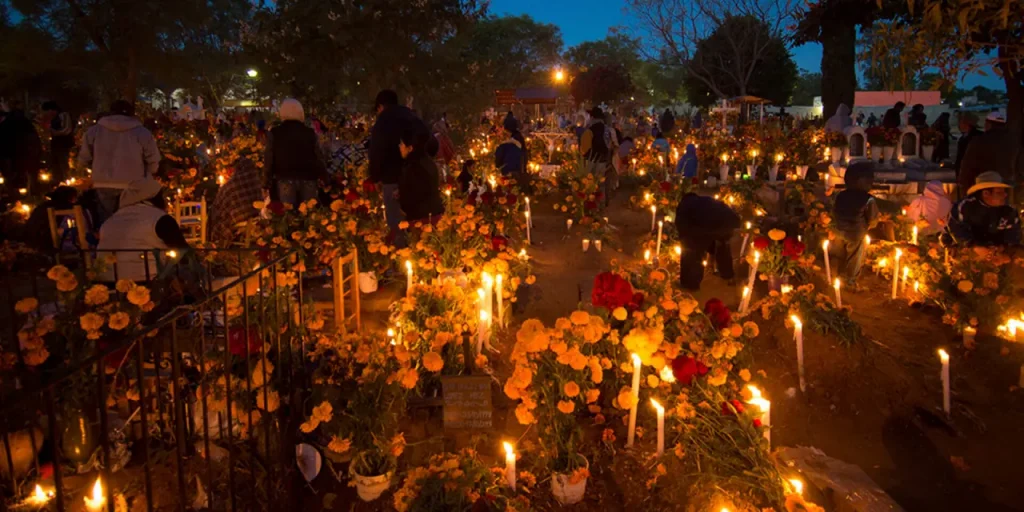The Day of the Dead according to Mexican tradition
The Day of the Dead may sound like a solemn event, but Mexico’s famous holiday is actually a lively commemoration of the deceased. The national festivities, which include a massive parade in Mexico City, typically begin on the night of October 31 with families sitting in vigil at graves. Mexican tradition holds that on November 1 and 2 the dead wake up to reconnect and celebrate with their living family and friends.
Given the timing, it can be tempting to confuse Día de los Muertos with Halloween, a ghost-themed American holiday. But the two holidays express fundamentally different beliefs. While Halloween has its origins in pagan and Christian traditions, the Day of the Dead has indigenous roots as a celebration of the Aztec goddess of death.

Mictecacihuatl, goddess of death
Aztec mythology tells that Mictecacihuatl was sacrificed as a baby and magically grew to adulthood in the underworld, where she married. With her husband, she presided over the underworld. Mictecacihuatl, often depicted with flayed skin and an open skeletal jaw, was associated with both death and resurrection. According to one myth, Mictecacihuatl and her husband collected bones so they could be returned to the land of the living and restored by the gods.
The Aztecs appeased these fearsome gods of the underworld by burying their dead with food and precious objects. Archaeologists and historians know relatively little about the details of Mictecacihuatl’s month-long celebration, but say it likely involved incense burning, song and dance, and blood sacrifice, practices common in many Aztec rituals.
The Day of the Dead is a tradition originally from Mexico, but has spread to other countries.
Mexican tradition
In Mexican curanderismo or shamanism, it is believed that there is a veil that separates the reality in which we live from that in which our ancestors and loved ones who have passed away are. This happens twice a year. The time when the veil is thinnest is during the last days of October and the first days of November. The veil begins to thin little by little until it is very thin.
On those days it is where the people are in a position to communicate and “feel” the ancestors and loved ones who had passed away. For some people, this is scary or sad. It is a time to celebrate the “union” of both realities and the reunion with deceased ancestors and loved ones.
Mexicans invite family and friends from this reality and from the other reality to join them. People prepare something called an Altar of the Dead, and this helps to create a portal for their ancestors and loved ones who have passed away to come, visit and celebrate with them.
Altars are set up with flowers, food, drinks, toys, candy, objects the family knows their ancestors enjoyed, and pictures of them. Some people also set up their altars with special items that help them know their loved ones are there.
